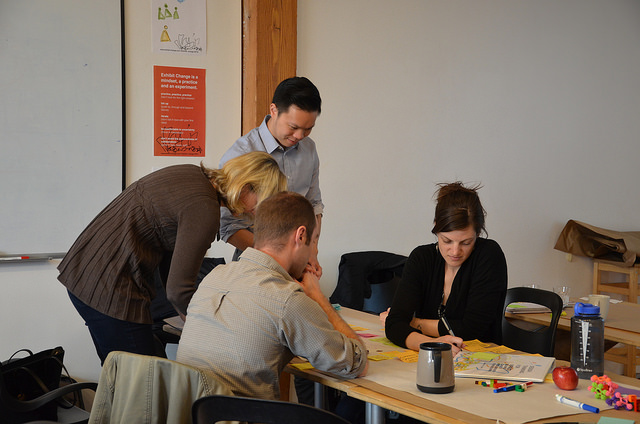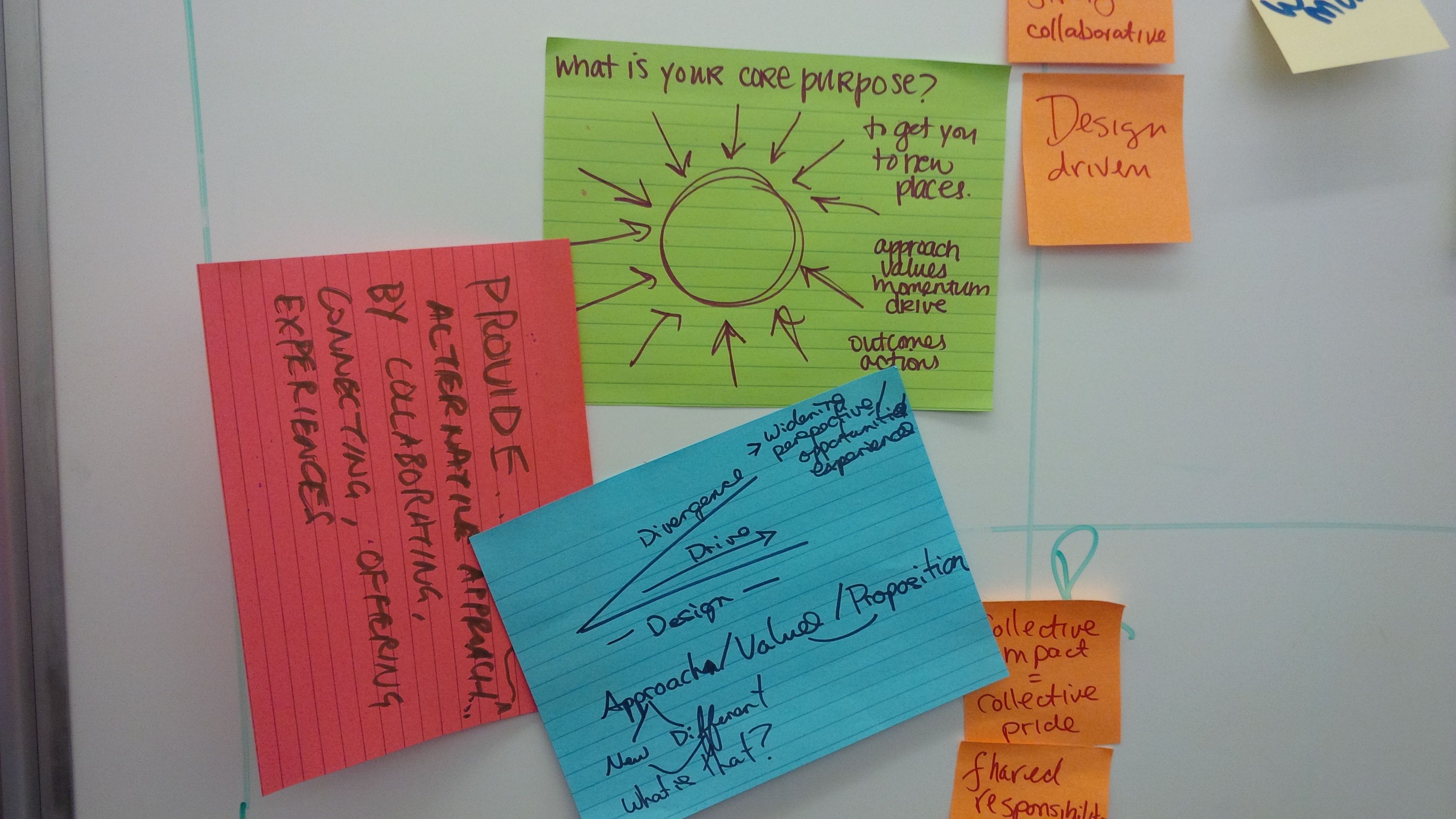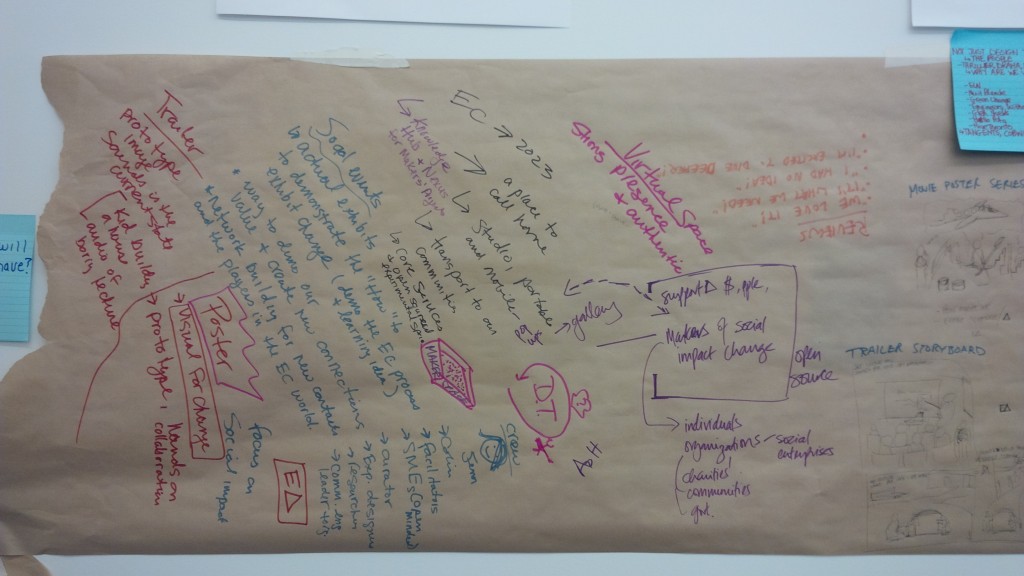In April, we put out a quick survey called “Learning About Design Thinkers”. The goal was simple: ask questions, get answers and then see what to do next. So the task of putting a survey out and getting folks to offer input was fairly simple.
The outcome of this experiment? We had 62 responses from across Canada and the United States and a few international guest appearances from China and Australia. Undoubtedly, if we had pushed this harder through our networks we might have received different answers and therefore different results. At this point, we are satisfied with the data set we have acquired and of course we are still hungry for more – this was just as much a test of the character our network as it was an experiment to learn more about design thinkers.
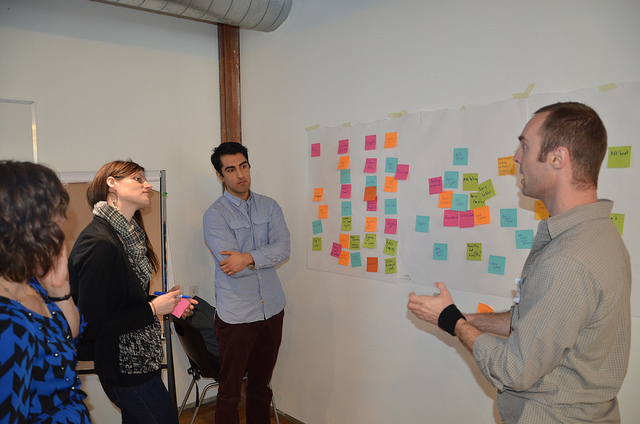
Before I dive into the first overview of the collected responses, I just want to share a story about this very iterative process. I had been sharing the survey for about 3 weeks when one of my online colleagues messaged me privately and said that he really wanted to help but that the questions felt a little daunting. We had a discussion and through the back and forth came to the conclusion that it would be helpful to add a disclaimer in to the survey to articulate that the results were not there to be judged and in fact I wouldn’t even be looking at them in connection to anyone’s name. Additionally, adding some subtext to each question to further frame the type of conversation we were hoping to spark. As a facilitator, I like to leave questions to interpretation, especially since there is no right or wrong answer, but in this case if more context helped people participate than that was a greater goal. So, I want to thank Dan Ryder for our feedback session!
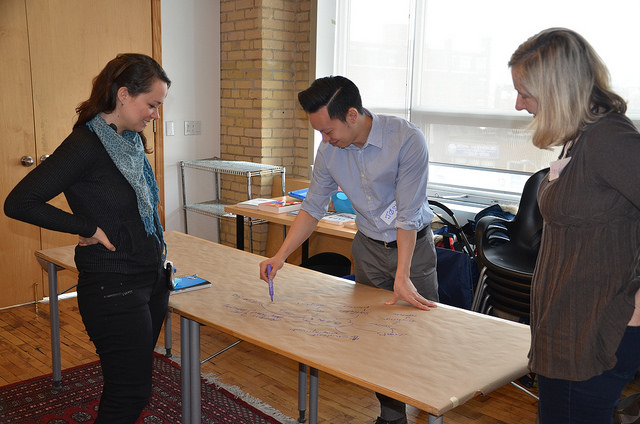
The intent with this survey is to use this information to learn more about the people who are working around us. So that we may gain empathy for people practicing, learning and teaching design thinking alongside us; to articulate challenges that our clients might be facing; and to explore challenges and insights without a central context. As a tool, a survey comes with its own set of baggage. We understood this going into this discovery experiment, we are thankful to everyone that took the time to sit down and respond. We recognize that we have all participated in our fair share of surveys, whether it be for evaluation, for testing, or for entering a contest.
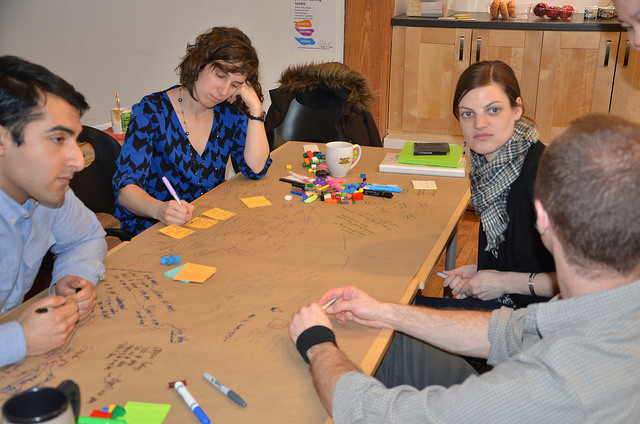
Initially when we launched this survey, I thought the easiest way to share the responses would be to simply post them, raw and undigested. Having reviewed the many responses and being able to see the great depth, the level of vulnerability and the honesty that was shared, I don’t feel like that would be an appropriate use of the trust shared between the responders and us. Plus, there are many overarching themes from the results that seem to be tying this community of practitioners together; it would be a missed opportunity to draw out these insights to help us move towards better incorporating design thinking into our every day.
In the weeks ahead, I will be sharing our reflections from each question and will ultimately use this information to craft tools to try and respond the best we can to some of the overlapping challenges.
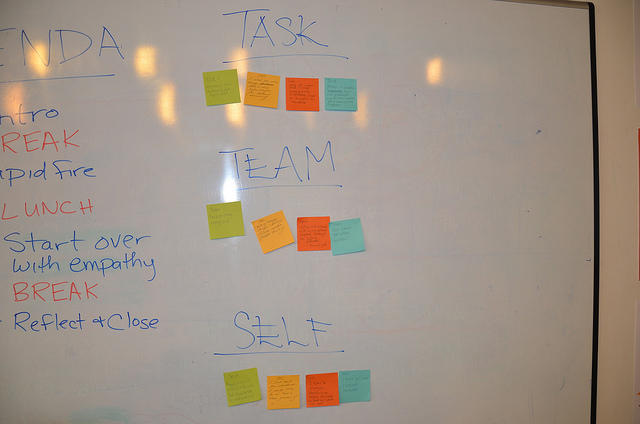
The questions in the survey focused on our favourite areas of Task, Team, Self. We believe that this tool is a great entry point for reflection and learning in the journey of leveraging the design thinking process. Looking into the results, I am intrigued by the tensions I am noticing in responses and how that creates opportunities to start understanding gaps that we have in the design thinking process.
